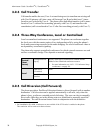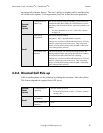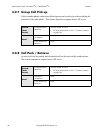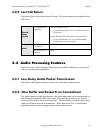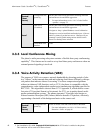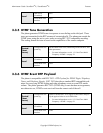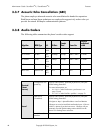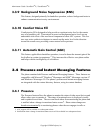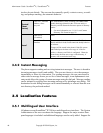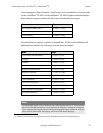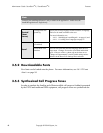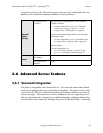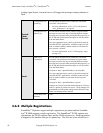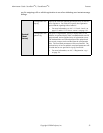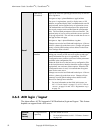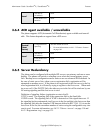
Administrator Guide - SoundPoint
®
IP / SoundStation
®
IP Features
46 Copyright © 2004 Polycom, Inc.
invokes do-not-disturb. The user can also manually specify a state to convey, overrid-
ing, and perhaps masking, the automatic behavior.
3.4.2 Instant Messaging
The phone supports sending and receiving instant text messages. The user is alerted to
incoming messages visually and audibly. The user can choose to view the messages
immediately or when it is convenient. For sending messages, the user can choose to
either select a message from a pre-set list of short messages, or an alphanumeric text
entry mode allows the typing of custom messages using the dial pad. Message sending
can be initiated by replying to an incoming message or by initiating a new dialog. The
destination for new dialog messages can be entered manually or selected from the con-
tact directory, the preferred method.
3.5 Localization Features
3.5.1 Multilingual User Interface
All phones except SoundPoint
®
IP 300 have multilingual user interfaces. The System
Administrator or the user can choose the language. Support for major western Euro-
pean languages is included and additional languages can be easily added. Support for
Central
(boot
server)
XML file: <Ethernet
address>-direc-
tory.xml
The <bw>0</bw> (buddy watching) and <bb>0</bb>
(buddy blocking) elements in the <Ethernet address>-
directory.xml file dictate the Presence aspects of directory
entries.
• For more information, see 3.1.16.1 Local Contact
Directory File Format on page 28.
Local
Web Server
(if enabled)
None.
Local Phone User
Interface
The user can edit the directory contents. The Watch
Buddy and Block Buddy fields control the buddy behavior
of contacts.
Changes will be stored in the phone’s flash file system
and backed up to the boot server copy of <Ethernet
address>-directory.xml if this is configured. When the
phone boots, the boot server copy of the directory, if
present, will overwrite the local copy.



